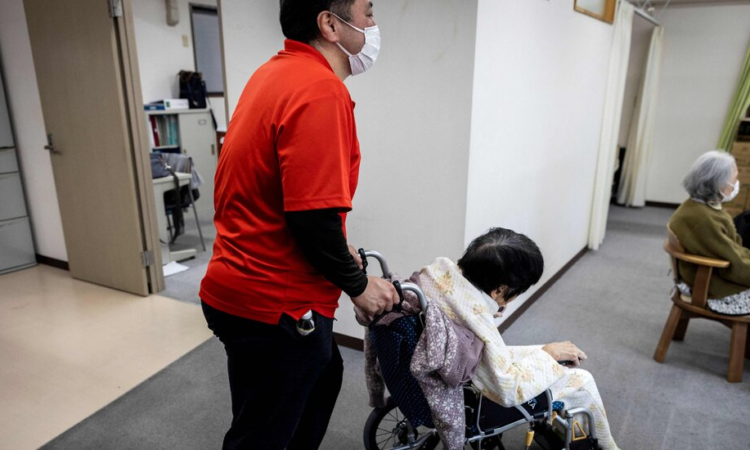
Dying Broke
Advertisement
Supported by
Dying broke
Most countries spend more than the United States on care, but middle class and affluent people still bear a substantial portion of the costs.
Around the world, wealthy countries are struggling to afford long-term care for rapidly aging populations. Most spend more than the United States through government funding or insurance that individuals are legally required to obtain. Some protect individuals from exhausting all their income or wealth paying for long-term care. But as in the United States, middle-class and affluent individuals in many countries can bear a substantial portion of the costs.
Notes: Figures show government funding and compulsory insurance spending on long-term care as a percentage of gross domestic product. Figures are for 2021 spending for all countries except Japan and Australia, which use 2020 figures.
Source: Organization for Economic Cooperation and Development
By Albert Sun
Here’s how five other countries pay for long-term care.
JAPAN. Long-term care insurance is mandatory for Japanese citizens age 40 and over, while in the United States only a small portion of people voluntarily obtain coverage. Half the funding for Japan’s program comes from tax revenues and half from premiums. Older adults contribute 10 to 30 percent of the cost of services, depending on their income, and insurance picks up the rest. There is a maximum amount people have to spend from their income before the insurance covers the remainder of the cost. Workers can also take up to 93 days of paid leave to help relatives with long-term care needs. Japan assigns a care manager to each person using services; each manager oversees about 40 older adults. In 2020, Japan spent 2 percent of its gross domestic product on long-term care, 67 percent more than the United States spent that year.
THE NETHERLANDS. The Dutch have included long-term care in their universal health care system since 1968. One public insurance program pays for nursing homes and other institutional settings, and another pays for nursing and personal care at home. Enrollment is mandatory. Dutch taxpayers contribute nearly 10 percent of their income toward insurance premiums, up to a set amount. Out-of-pocket payments amount to about 7 percent of the cost of institutional care. General taxes pay for a third program in which municipalities provide financial assistance and social support for older people living at home. There is no private long-term care insurance. The Netherlands spent 4.1 percent of its gross domestic product on long-term care in 2021, more than any other country tracked by the Organization for Economic Cooperation and Development, and four times the amount the United States spent.
CANADA. Provinces and territories fund long-term care services through general tax revenue. Money budgeted is not always enough to cover all services, and some localities give priority to those with the greatest needs. The amount of subsidies people can receive, the costs they have to pay out of pocket and the availability of services vary by province and territory, as they do in the United States with state Medicaid programs. The mix of providers also varies regionally: For instance, nursing home care in Quebec is mostly run by a public system while homes in Ontario are mostly for-profit. Notably, Canada’s long-term care system is separate from its national health care system, which pays for hospitals and doctors with no out-of-pocket costs to patients. In 2021, Canada spent 1.8 percent of its G.D.P. on long-term care, 80 percent more than the United States spent.
We are having trouble retrieving the article content.
Please enable JavaScript in your browser settings.
Thank you for your patience while we verify access. If you are in Reader mode please exit and log into your Times account, or subscribe for all of The Times.
Thank you for your patience while we verify access.
Already a subscriber? Log in.
Want all of The Times? Subscribe.
Advertisement







